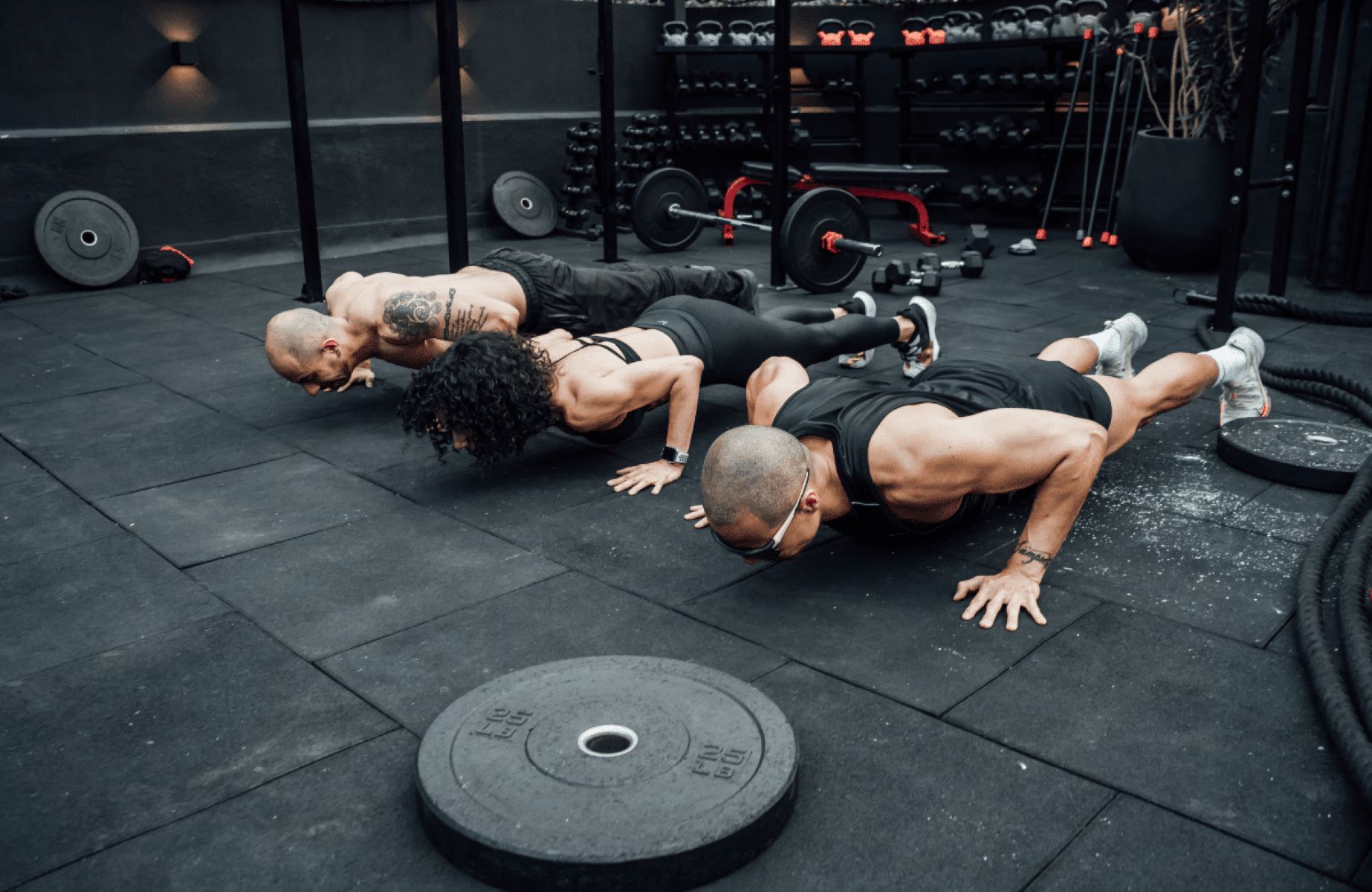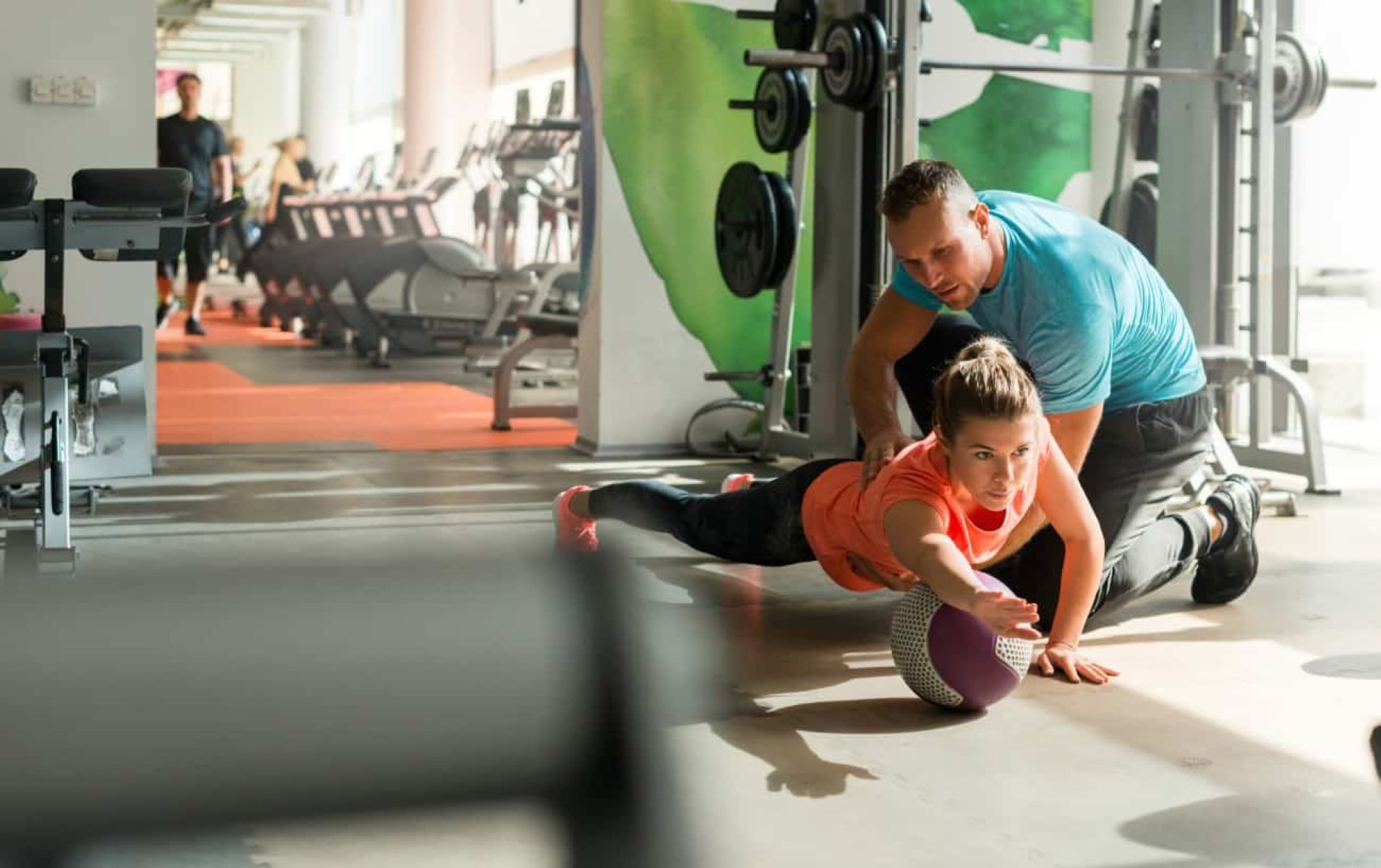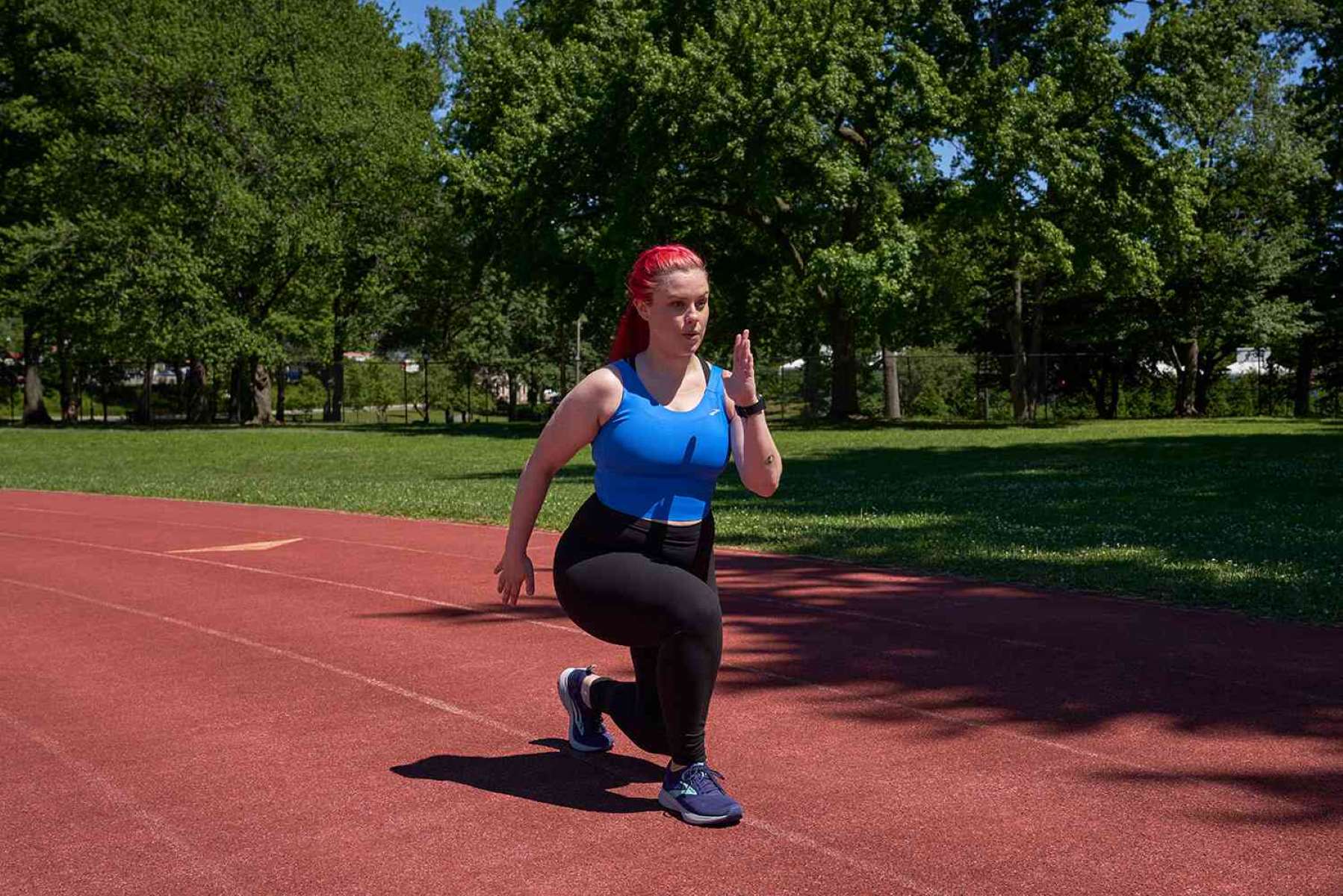Home>Misc>Featured>Which Is An Activity That Will Build Muscle Endurance


Featured
Which Is An Activity That Will Build Muscle Endurance
Modified: January 22, 2024
Looking for an activity to build muscle endurance? Our featured workout is designed to help you strengthen and tone your muscles for optimal endurance.
Introduction
Building muscle endurance is a crucial aspect of physical fitness that is often overlooked. While many people focus on strength and muscle size, developing endurance plays a vital role in improving overall performance and maintaining a healthy lifestyle. Muscle endurance refers to the ability of your muscles to sustain repeated contractions over an extended period of time. It is particularly important in activities that require repetitive movements, such as running, swimming, cycling, or weightlifting.
Whether you are an athlete looking to enhance your performance or someone seeking to improve your overall fitness level, building muscle endurance should be an integral part of your training regimen. This article will explore the importance of muscle endurance, the factors that affect it, how to choose the right activities to build muscle endurance, and the top activities that can help you achieve your goals. Additionally, we will discuss the myriad of benefits that come with increasing muscle endurance and provide some valuable tips to help you maximize your efforts.
By the end of this article, you will have a clear understanding of the significance of muscle endurance and be equipped with the knowledge to incorporate effective strategies into your fitness routine.
Importance of Muscle Endurance
Muscle endurance is a key component of physical fitness that benefits individuals of all fitness levels and ages. It plays a crucial role in various aspects of daily life and sports performance. Let’s explore some of the reasons why muscle endurance is important:
- Enhanced Performance: Whether you’re an athlete participating in sports or simply engaged in regular physical activities, muscle endurance is vital for optimal performance. Having well-conditioned muscles allows you to sustain activities for longer durations without experiencing fatigue. This endurance can greatly improve your ability to run longer distances, swim faster, cycle for extended periods, and perform repetitive movements with ease.
- Prevention of Injuries: Building muscle endurance helps to prevent injuries by enhancing the stability and strength of your muscles. When your muscles are fatigued, they are more vulnerable to strain and sprains. By improving endurance, you can better withstand the demands placed on your muscles, reducing the risk of injury during physical activities.
- Functional Fitness: Having good muscle endurance is essential for performing daily tasks with ease. Activities such as carrying groceries, climbing stairs, or playing with your children or grandchildren require muscular stamina. By developing muscle endurance, you’ll be able to enjoy an active lifestyle and maintain functional fitness as you age.
- Weight Management: Regular engaging in activities that boost muscle endurance can help with weight management. Muscles are metabolically active tissues that burn calories even at rest. By increasing their endurance, you can raise your overall metabolic rate, aiding in weight loss and weight maintenance.
- Cardiovascular Health: Muscle endurance activities, such as aerobic exercises, elevate your heart rate and increase blood flow. Regular cardiovascular exercise improves heart health, lowers blood pressure, and reduces the risk of chronic diseases such as heart disease, stroke, and diabetes.
These are just a few reasons why muscle endurance is crucial for your overall well-being and physical performance. By prioritizing muscle endurance training, you can reap the countless benefits it offers and reach your fitness goals more effectively.
Factors Affecting Muscle Endurance
Muscle endurance is influenced by various factors that can affect your ability to sustain prolonged physical activity. Understanding these factors can help you tailor your training program and optimize your muscle endurance development. Here are some key factors that influence muscle endurance:
- Muscle Fiber Type: Your muscle fiber composition can impact your endurance capabilities. There are two primary types of muscle fibers: slow-twitch (Type I) and fast-twitch (Type II). Slow-twitch fibers are more fatigue-resistant and well-suited for endurance activities, while fast-twitch fibers are more suited for strength and power. The proportion of each fiber type in your muscles can influence your muscle endurance potential.
- Training Volume: The volume and intensity of your training play a significant role in developing muscle endurance. Regularly engaging in endurance-focused exercises, such as running, swimming, or cycling, allows your muscles to adapt and become more efficient at sustaining prolonged activity. Gradually increasing the duration and intensity of your workouts can improve your muscle endurance over time.
- Muscular Strength: Muscular strength and muscle endurance are interconnected. Having a solid foundation of strength enables your muscles to perform efficiently for an extended period. Strength training exercises, such as weightlifting, can help build muscle strength, and when combined with endurance training, contribute to greater overall muscle endurance.
- Cardiovascular Fitness: The health and efficiency of your cardiovascular system are instrumental in supporting muscle endurance. A strong heart and lungs can deliver oxygen-rich blood to your muscles, aiding in their endurance. Regular cardiovascular exercises, such as jogging, cycling, or aerobic classes, can improve your cardiovascular fitness and enhance muscle endurance.
- Proper Nutrition and Hydration: Adequate nutrition and hydration are essential for optimizing muscle endurance. Fueling your body with a balanced diet rich in carbohydrates, proteins, and healthy fats provides the necessary energy to sustain physical activities. Staying hydrated ensures optimal muscle function and helps prevent fatigue.
It’s important to note that the relative contribution of each factor may vary among individuals. Genetic factors also play a role in determining muscle endurance potential. However, by understanding these factors and incorporating appropriate training strategies, you can effectively improve your muscle endurance and maximize your performance.
Choosing the Right Activity for Building Muscle Endurance
When it comes to building muscle endurance, it’s essential to select activities that specifically target and challenge your muscles. Not all exercises are created equal in terms of enhancing endurance, so it’s important to choose the right activities. Here are some key considerations to keep in mind when selecting activities for building muscle endurance:
- Focus on Endurance-Based Activities: Look for exercises that involve repetitive movements and sustained effort over an extended period. Activities like running, swimming, cycling, rowing, and high-intensity interval training (HIIT) are excellent options that engage multiple muscle groups and promote endurance development.
- Variety of Intensity and Duration: Incorporate a mix of low, moderate, and high-intensity workouts into your routine. This helps target different muscle fibers, enhancing overall muscle endurance. Long, steady-state workouts build endurance at a moderate intensity, while shorter, high-intensity intervals improve the body’s ability to recover quickly and sustain effort.
- Consider Cross-Training: Engaging in a variety of exercises can prevent overuse injuries and keep your workouts interesting. Incorporate cross-training activities such as yoga, Pilates, resistance training, and circuit training to improve overall muscle strength, flexibility, and endurance.
- Progressive Overload: To continuously challenge your muscles and improve endurance, gradually increase the difficulty of your workouts over time. Increase the duration, intensity, or resistance in a progressive and controlled manner to stimulate muscular adaptation and development.
- Enjoyment and Sustainability: Choose activities that you enjoy and can sustain over the long term. Consistency is key when it comes to building endurance, so finding activities that keep you motivated and engaged will greatly increase your chances of success.
Remember to consult with a fitness professional or trainer if you’re unsure about the appropriate activities for your fitness level or if you have any underlying health concerns. They can provide personalized guidance and help you design a workout program that matches your goals and abilities.
Top Activities to Build Muscle Endurance
Engaging in specific activities that focus on endurance training can significantly improve your muscle endurance. Incorporating a variety of exercises into your routine can target different muscle groups and enhance overall endurance. Here are some of the top activities to consider when building muscle endurance:
- Running: Running is a classic endurance activity that engages multiple muscle groups and boosts cardiovascular fitness. Start with shorter distances and gradually increase your mileage to challenge your endurance.
- Swimming: Swimming is a low-impact, full-body workout that improves cardiovascular fitness and builds muscle endurance. It challenges your muscles to sustain movements against water resistance, making it an excellent option for those seeking a low-impact activity.
- Cycling: Cycling is an effective way to build endurance while reducing impact on your joints. Whether you prefer outdoor cycling, indoor cycling classes, or stationary bikes, this activity targets your lower body muscles and enhances cardiovascular fitness.
- High-Intensity Interval Training (HIIT): HIIT workouts combine short bursts of intense exercises with brief recovery periods. These workouts can significantly improve cardiovascular endurance and help you push your limits in a short amount of time.
- Rowing: Rowing is a full-body workout that combines strength and endurance. It engages your legs, core, and upper body muscles while providing a low-impact cardiovascular exercise.
- Stair Climbing: Climbing stairs is a simple yet effective way to improve endurance. You can climb natural stairs, use stair machines at the gym, or find a nearby stadium for stair workouts. This activity targets your leg muscles and elevates your heart rate.
- Aerobic Classes: Participating in aerobic classes such as step aerobics, dance fitness, kickboxing, or Zumba can be an enjoyable way to improve muscle endurance. These classes often include high-energy, repetitive movements that challenge your cardiovascular system and build endurance.
- Circuit Training: Circuit training involves performing a series of exercises targeting different muscle groups with little to no rest in between. This type of workout combines strength training and aerobic exercises, making it an effective way to improve muscular endurance.
Remember to choose activities that fit your fitness level and interests. Incorporating a combination of these top activities into your weekly routine not only improves endurance but also adds variety and keeps your workouts exciting.
Benefits of Building Muscle Endurance
Building muscle endurance offers a multitude of benefits that can enhance both your physical performance and overall well-being. Here are some key advantages of developing muscle endurance:
- Improved Stamina: Building muscle endurance allows you to sustain physical activities for longer periods without experiencing excessive fatigue. This improved stamina translates into increased performance in sports, daily tasks, and activities of daily living.
- Enhanced Athletic Performance: Whether you’re an athlete or a recreational sports enthusiast, muscle endurance is essential for optimal performance. It enables you to maintain a high level of intensity throughout the duration of your activity, helping you perform better and achieve your athletic goals.
- Increased Energy Efficiency: Developing muscle endurance improves your body’s energy efficiency by using oxygen more effectively. This results in a reduced perception of effort during exercise, enabling you to exercise for longer periods without feeling as tired.
- Reduced Risk of Injuries: Building muscle endurance not only improves muscular strength but also enhances joint stability and integrity. This can help reduce the risk of injuries, especially during activities that require repetitive movements or prolonged exertion.
- Decreased Fatigue: Regular endurance training improves your body’s ability to clear metabolic waste products, such as lactic acid, more efficiently. This means that you’ll experience less muscle fatigue and delayed onset of muscle soreness, allowing for quicker recovery after strenuous activities.
- Weight Management: Engaging in muscle endurance activities can aid in weight management. Endurance exercises help burn calories both during and after the workout, contributing to weight loss or weight maintenance when combined with a balanced diet.
- Improved Cardiovascular Health: Building muscle endurance through cardiovascular exercises has significant cardiovascular benefits. It strengthens your heart muscle, improves blood circulation, lowers blood pressure, and reduces the risk of cardiovascular diseases such as heart disease and stroke.
- Enhanced Overall Fitness: Building muscle endurance is a key component of overall fitness. By improving your muscle endurance, you can enhance your strength, flexibility, balance, and agility, leading to a well-rounded and functional fitness level.
These benefits highlight the importance of including muscle endurance training in your fitness routine. By prioritizing and dedicating time to developing muscle endurance, you can experience improvements in performance, reduce the risk of injuries, and boost your overall health and well-being.
Tips for Increasing Muscle Endurance
Building muscle endurance requires a dedicated effort and structured training approach. Incorporating the following tips into your workout routine can help maximize your efforts and effectively increase your muscle endurance:
- Gradual Progression: Start with shorter durations or lower intensities and gradually increase over time. Slowly progressing allows your muscles to adapt and avoid overexertion or injury.
- Mix Up Your Workouts: Incorporate a variety of activities and exercises to challenge different muscle groups and prevent plateaus. Cross-training can also help prevent overuse injuries and keep your workouts enjoyable.
- Interval Training: Incorporate interval training into your exercise routine, alternating between periods of high-intensity effort and periods of active recovery. This can improve your cardiovascular fitness and enhance overall endurance.
- Strength Training: Include strength training exercises in your routine to improve muscular strength, which can help support endurance activities. Focus on compound exercises that engage multiple muscle groups simultaneously.
- Proper Nutrition: Fuel your body with a balanced diet that includes carbohydrates, proteins, and healthy fats. This provides the necessary energy and nutrients for muscle endurance activities. Stay hydrated to maintain optimal muscle function and prevent fatigue.
- Consistency: Regular, consistent training is key to building muscle endurance. Aim for a minimum of three to five workouts per week and make it a priority in your schedule.
- Rest and Recovery: Allow your body enough time to rest and recover between workouts. This allows your muscles to repair and adapt, leading to improved endurance over time.
- Proper Technique: Use proper form and technique during exercises to maximize effectiveness and prevent injuries. Seek guidance from a fitness professional if needed to ensure you are performing exercises correctly.
- Monitor Progress: Keep track of your workouts, noting duration, intensity, and any improvements you observe. This will help you see your progress over time and make adjustments as needed.
- Listen to Your Body: Pay attention to your body’s signals and adjust your training as necessary. Push yourself, but also know when to rest or modify exercises if experiencing pain or excessive fatigue.
By implementing these tips, you can effectively increase your muscle endurance and enjoy the benefits it brings to your overall fitness and performance.
Conclusion
Building muscle endurance is a key aspect of physical fitness that should not be overlooked. It plays a vital role in enhancing athletic performance, preventing injuries, and improving overall health and well-being. By engaging in activities that specifically target endurance, gradually increasing intensity and duration, and incorporating strength training and proper nutrition, you can effectively develop your muscle endurance.
Through the process of building muscle endurance, you can experience numerous benefits such as improved stamina, enhanced athletic performance, increased energy efficiency, reduced risk of injuries, decreased fatigue, weight management, improved cardiovascular health, and enhanced overall fitness. These advantages make it clear why muscle endurance should be a priority in your training regimen.
Remember to listen to your body, progress at a controlled pace, and focus on a balanced and consistent approach. Consulting with a fitness professional can be helpful in designing a tailored program that suits your individual needs and goals.
Building muscle endurance takes time and effort, but the rewards are well worth it. By prioritizing and incorporating strategies to increase muscle endurance into your fitness routine, you can unlock your full potential and take your fitness journey to new heights.









